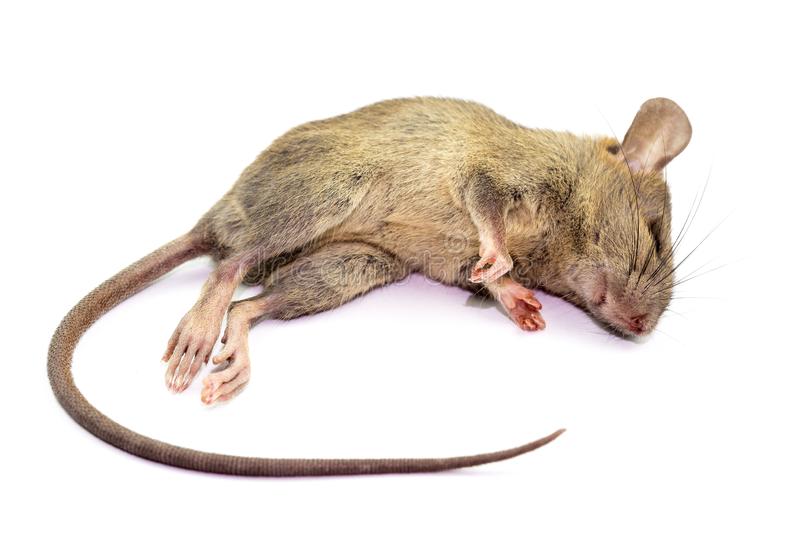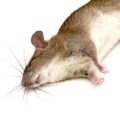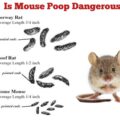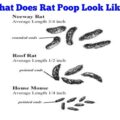Worldwide, rats and mice spread over 35 diseases. These diseases can be spread to humans directly, through handling of rodents, through contact with rodent feces, urine, or saliva, or through rodent bites. Diseases carried by rodents can also be spread to humans indirectly, through ticks, mites or fleas that have fed on an infected rodent. To properly understand the dangers of rodents in the home, one must understand the basics of how disease can be spread. Transmission of diseases usually occurs through several routes:
- Exposure to (handling of, ingesting of, and airborne particles from) infected rodent waste including: feces, urine, saliva, and nesting material.
- Bites from infected rodent or insect.
- Handling of infected rodents or insects – some viruses can transfer from skin to skin contact with no bite or scratch mark necessary.
The following is a list of major diseases spread by rats, rodents and insects that feed or travel on these rodents like: fleas, ticks or mites.
- Hantavirus
Most commonly found in the white-footed mouse, cotton rat and rice rat, the Hantavirus is a potentially life-threatening disease that currently has no specific treatment, cure or vaccine.
Symptoms include: fever, fatigue, muscle aches (generally in hips, backs and thighs) and may include, diarrhea abdominal pain, nausea and vomiting.
- Lymphocytic Choriomeningitis Virus (LCMV)
Lymphocytic choriomeningitis virus, or LCMV, most popular host is the common house mouse. LCMV usually occurs in two stages. The first stage includes symptoms such as nausea, vomiting, headache, muscle aches and lack of appetite. The second stage is primarily more neurological in nature including the occurrence of: meningitis, encephalitis, or meningoencephalitis.
- Plague
Yes, you read that right. The same plague that killed millions of people during the Middle Ages could be creeping around your floor boards and behind your walls. The most basic form of plague may be as close as one infected flea bite away. Of the different types of plague (there are several: Bubonic, Septicemic, Pneumonic) all are caused by the same bacterium: Yersinia pestis. The different types are classified by which level of the body the plague has reached: the immune system, the blood system and the lungs.
Symptoms are dependent on the type. Prompt medical treatment through antibiotics is necessary to treat illness and possible death.
- Salmonella
Some rodents carry the salmonella bacteria in their digestive tract, (who knew?) making any contact with rodent waste, especially the consumption of contaminated food, a potential risk to contract salmonella.
Symptoms include: chills, fever, abdominal cramps, nausea, vomiting, and diarrhea.
- Rat Bite Fever
No, this is not the latest dance craze. As the name suggests, Rat Bite Fever is spread when a person has been bitten by a rodent who is infected, has handled an infected rodent (even when no bite or scratch occurs) or has consumed the bacteria in some form.
Symptoms include: fever, skin rash, headaches, vomiting, rash and muscle pain.
- Tularemia
Caused by the bacterium Francisella tularenis, Tularemia is often found in rodents, rabbits and hares who are especially prone. Tularemia is most commonly transferred to humans by an infected tick or deer fly bite, or by handling of an animal that is infected. Reported in almost every state in America, Tularemia can be life a threatening illness, though most cases can be treated with the use of antibiotics.
Most common symptom: fever.
7. Lassa Fever
Lassa fever is endemic in Nigeria and the annual peak of human cases is usually observed during the dry season (December–April) following the reproduction cycle of the Mastromy rats in the wet season (May – June). Given that 90-95% of human infections are due to indirect exposure to (through food or household items contaminated by infected rats’ urine and faeces) or direct contact with infected Mastromy rats, the very high density and high circulation of Lassa fever virus in young non-immune rat population during the wet season create a potential for further human infection, thus, the number of infections is expected to continue to rise until the end of the dry season.
Most common symptom: The onset of the disease, when it is symptomatic, is usually gradual, starting with fever, general weakness, and malaise. After a few days, headache, sore throat, muscle pain, chest pain, nausea, vomiting, diarrhea, cough, and abdominal pain may follow.
Fastest Ways To Kill Rats In Nigeria
Rats (especially Roof rats) are wary of new objects, new foods or changes in environment. They are constantly exploring surroundings and notice changes and are suspicious by nature. This is why traps and bait stations may be avoided for a day or two. They approach new food or object with caution. Within a rat colony, they may be a few rats that are extra cautious and manage to avoid traps or eating rodent baits.
Kill and Dry Rat Poison: This is the most popular rat killer in Nigeria, they are famed for eliminating rats instantly. It works by coating these villi and disrupting the rodent’s nervous system. This disruption as a result of sodium chloride causes the rat to lose the impulse to drink water. Obviously, this causes it to dehydrate. Without enough water, the nervous system cannot transmit impulses properly, the blood thickens, and tissues begin to die. After a few days, the rodent dies after a period of lethargy and sleep. After death, the poison that remains in the digestive system rapidly absorbs all the water remaining in the body, causing it to dry out and mummify. This won’t completely eliminate the smell of decomposition, but it reduces it by 90 percent.
Mouse Trap: This is the oldest form of eliminating rats in Nigeria. A mousetrap is a specialized type of animal trap designed primarily to catch and, usually, kill mice. Mousetraps are usually set in an indoor location where there is a suspected infestation of rodents. Larger traps are designed to catch other species of animals, such as rats, squirrels, other small rodents, or other animals. Mice traps for rodent control come in many types of styles. The most common and effective mice traps are snap traps, muliple mice traps and glue traps. The snap type of mice trap has been around a long time. New types of snap traps are constantly coming on the market. Trapping mice requires skill and time.
General Mouse Trapping Tips
- Location: Good trap placement is an essential step for effective use of mouse traps. Inspect first to determine the activity of the mice. Place traps in areas of high activity. Typical active areas are along walls, behind appliances, behind objects, and darkened corners. Placing mouse traps out evenly at a set distance may provide thorough coverage, but it is not guaranteed to reach the mice. Place traps in areas where mice are running or nesting. To maximize the chances of mice passing over the traps, place along their runways or paths. Place mouse traps at a right angle from the wall, with the trigger end almost touching the wall. If they are set parallel to the wall, set them in pairs with the triggers situated to intercept mice coming from either direction. Use more traps for heavier populations.
- Use Enough Traps: A common trapping error when placing out mice traps, is to use too few traps. Even for just one or two mice, using six traps are not too many. Place mice traps at intervals of two-ten feet apart. In a typical residential example, use two traps behind the stove, two traps behind the refrigerator, and two traps under the kitchen sink. Most of the time, mice are caught the first night. In a storage room in a restaurant, two dozen traps may be required.
- Two Mouse Traps (Snap Traps or Glue Traps) Placed Together: In locations of high mice activity, use two snap or glue mouse traps together, with about 1″ space between them. This would catch mice that try to jump over the traps, a particularly common occurrence.
- Aggressive Trapping: Take advantage of the first trap night when trapping mice. More mice are caught the first night, than the following nights. Make sure to set out plenty of traps to take advantage of the timing.
- Baits or Lures: Only a small amount (pea size) of bait or lure is needed. It is a good idea to offer a mouse a lure that is high in protein, like peanut butter. But the lure’s success depends greatly on how much other food is available and what they are accustomed to eating. Besides peanut butter, fried bacon, salami, oatmeal, and chocolate are usually favored by mice. If there are numerous mice, using a variety of baits in different mice traps would offer a wide range of choices. A good strategy would be to offer food lures that are not available in the area. As an example, in a flour mill, use meat as an enticement.
Home Remedies
Peppermint Oil: Rats dislike the smell of peppermint oil. We find the smell of peppermint refreshing but rats don’t so use peppermint oil to drive them away from your home. Place peppermint oil- dipped cotton balls in front of several small openings in your home to keep rats at bay.
Plaster of Paris and Cocoa Powder: Plaster of Paris and cocoa powder also works to kill rats and mice. Mix 1 tablespoon of cocoa powder with plaster of Paris and sprinkle it around the standard trail for the rats and mice. As cocoa powder attracts these pests, they tend to eat this mixture and soon they feel dehydrated and suffocated. To save themselves, they rush out of homes and die.
Hot Pepper Flakes: Hot pepper flakes not only make humans sneeze but also keep rats and mice away. Sprinkle hot pepper along the doorways and other corners of your house to get rid of vermins.
Onions: Placing onions around small holes and openings while assuring that these bulbs are replaced every second day, can keeps rats away from your home. The pungent smell of onions will soon drive them away.
Garlic Bulb: As rats dislike strong smell, you must make complete use of this attribute of rats to drive them away. Mixing chopped garlic with water and sprinkling it around your home or even spreading garlic cloves in the pathway of their regular trail can drive them away.
Potato Powder: Using instant potato powder also works to drive rats and mice away. As you sprinkle this powder at home, rats and mice then go around, following the trail and feeding on this yummy treat. As the powder enters their body, those potato flakes then swell up within the intestine and kill them eventually.
Ammonia Spray: Prepare an easy to use ammonia spray. Spray ammonia on small cotton balls and place them near rat holes, driveways, and other corner of your house. The smell of ammonia will make them feel suffocated and they will soon run away from your home in order to save their lives.
Bay Leaves: The aroma of bay leaves attract rats and they tend to think it as their food. However, when try to feed upon it, they choke themselves, and eventually die. So, place some bay leaves around the corners of your house and kill these annoying pests.
FAQs
Often breeding in contaminated areas, rats and mice typically transmit salmonella and E. coli, which is why, you must take action soon to kill them or drive them away from your home. Many people have different questions regarding pests. So, we have tried to answer a few –
- Are Rats and Mice Scared of Dogs?
Yes, of course! Rats and mice are scared of dogs and cats. A pet dog could keep the rat-problem in check. Dogs are fierce and can generally scare mice away. However, some dog breeds, for example, the hound breeds of dogs are hunter dogs and are known to feed on small animals like rats and mice. However, these pests can be poisonous and swallowing or allowing your pet-dog to feast on them is not recommended.
- Do Rats Come Out in the Light or Do They Avoid Light?
Rats are highly fond of dark corners, crevices, and storage areas that do not invite light. These nooks and crannies in your home, act as comfortable homes for these pests and give way for a heavy breeding ground. Therefore, it is recommended that you regularly dust, clean and take out garbage from you home to not let these pests hide away and breed.
With these home remedies you can perform pest control in your house on your own. Try these tricks and watch these pests running away from your home.






